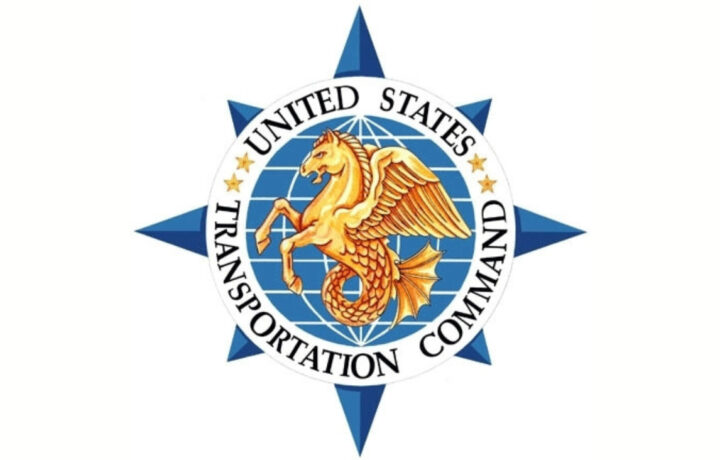You can have the best tools in the world, but without the right people using them, the mission fails.
That sentiment echoed loud and clear at GEOINT 2025 during a fireside chat featuring Bob Sharp—former NGA Director—and Captain Tim Raymie, Director of Intelligence (J2) for USTRANSCOM. Together, they offered attendees a behind-the-scenes look at how geospatial intelligence is fueling military readiness, how AI is changing the analyst’s toolkit, and why the “human touch” still matters in national defense.
Meet the Mission Behind the Mission
Captain Raymie kicked things off by highlighting something often overlooked in defense circles: connection. Not just system-to-system, but person-to-person.
“Getting to know the people behind the mission is important,” he shared. His own heritage and history within the geospatial community made it feel like a homecoming of sorts. That perspective shapes how he leads at USTRANSCOM—where the daily mission includes ensuring global mobility, protecting supply chains, and staying one step ahead of adversaries.
People First, Always
Asked about top priorities as J2, Raymie didn’t hesitate: “The people really are the priority.” For him, success isn’t just about classified briefings or operational checklists—it’s making sure his team has the right tools, the right training, and the sense of belonging that keeps morale high.
Sharp agreed, repeating one of his favorite refrains about people: “I’m not a broken record. I’m just consistent.” People come first because they’re the ones who carry the mission forward, he emphasized. “It can never be an afterthought.”
Command Guidance and Unity
When asked about leadership under General Randall Reed, 15th Commander of USTRANSCOM, Raymie highlighted clear, actionable expectations from him: Be ready at all levels. Protect nodes and modes. And stretch your authorities—don’t wait to be told what to do.
The guidance applies not just internally, but across commercial partners and allied teams. USTRANSCOM’s tight-knit culture, combined with clarity of purpose, is what allows rapid response in times of crisis.
Embedded GEOINT and NGA’s Role
When Sharp asked about NGA’s contribution, Raymie lit up. “They’re involved in everything we do,” he said, emphasizing how critical the embedded NGA teams are to operations. From open ocean searches to fast-moving missions, the NGA partnership enables faster, more accurate decisions—and exemplifies what “connected and collaborative” really looks like in practice.
Automating the Analyst’s Load
Raymie pointed to one of the most exciting advancements in recent years: technology that reduces the burden on the analyst. From automating reports to accelerating open-ocean searches, these tools allow human analysts to focus more and do better.
Maven Smart System, brought online just months ago, is already integrated into USTRANSCOM’s 24/7 watch floor, helping analysts plug directly into relevant data streams. That saves precious time and increases confidence in operational decisions.
AI, ML, and the “Ninja Analyst” of the Future
Sharp and Raymie both acknowledged the transformational role AI/ML will play—but neither sees it as a threat to human analysts.
“The goal,” said Sharp, “is to make ninja analysts—not replace them.”
LLMs are already integrated into classified and unclassified environments (NIPR, SIPR, JWICS), helping to streamline and sharpen day-to-day work. But both speakers emphasized that no matter how powerful the algorithm, you’ll still need someone with experience to verify the truth and apply context.
Raymie added: “The machines help—but trust comes from experienced analysts paired with the tech.”
Cybersecurity and Industry’s Role
Asked where industry could offer the most help, Raymie was clear: cybersecurity. With so much of USTRANSCOM’s coordination done on the unclassified side, protecting data and communication lines is a top priority. It’s not just about keeping up with adversaries—it’s staying a step ahead of them.
Sharp echoed the need to balance speed with security: “Anytime we’re thinking about doing things, you have to be thinking about adversaries doing the same thing.”
Leadership Is Walking the Floor
Both leaders stressed that keeping people engaged is about more than issuing directives—it’s about showing up. Raymie makes a point of walking the floor, asking about families, listening, and being sincere.
Sharp added a personal touch: “When I mentor leaders, I tell them to call their IT desk and thank them when things work. Take the time to thank people—it will make your day better, too.”
The Biggest Threat? China
To close the session, Sharp asked Raymie: What’s the biggest threat facing USTRANSCOM today?
Without hesitation, Raymie responded: “China.”
That focus threads through every decision, from logistics to intelligence to cyber strategy. It’s not just about today’s posture—but about pacing future threats in an increasingly competitive world.




